Clipart tagged: ‘Steam Power Generation’

Reducing Motion of Piston and Indicator using Brumbo Pulley
A pulley system used to reduce motion between the piston and the indicator of the steam engine. The…
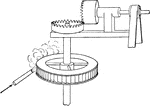
Steam Rotary Engine
An illustration of a rotary steam engine. The steam turbine system was invented by Branca in 1629. Steam…

De Laval Steam Turbine Connected to Generator
A De Laval steam turbine connected to a generator. The turbine generates electricity by turning the…

Pearsons Turbine for Electricity Generator
A cross sectional view of the Pearsons turbine for generating electricity. The turbines, located in…

Reducing Lever for Piston and Indicator in Large Steam Engines
A reducing lever for large engines to measure pressure of steam in the cylinder. The string to the indicator…
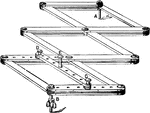
Horizontal Pivot Pantograph for Motion Reduction between Piston and Steam Engine Indicator
"It is placed horizontally with the pivot, B, resting on a support opposite the crosshead when in mid—position.…
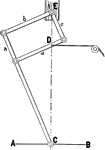
Motion Reduction using Pantograph of Piston Connected to Indicator of Steam Engine
A pantograph used to reduce motion of the piston. At point D, a string is attached to the indicator,…

Jacketing Piston to Reduce Heat Loss
"The cylinder covers are also made hollow to permit a circulation of live steam. A cylinder having the…
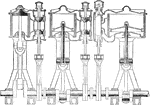
Piston of a Triple Expansion Steam Engine
A piston diagram from a triple expansion steam engine. The three cylinders are designed at high, medium,…

Direct Acting Steam Pump
"The direct—acting steam pump has the steam piston at one end of a rod and the water position…

Shaft in an Eccentric Motion from Steam Engine
"As the eccentric turns in the strap, the point O moves in the dotted circle around O', and the point…

Cross Compound Steam Engine
Illustration of a cross compound steam engine. The engine is designed to hold pressure until the engine's…
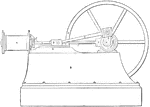
Low Power Simple Steam Engine Diagram
A low power steam engine. The piston inside cylinder A moves the wheel, generating power at 100 horsepower…

Low Power Simple Expansion Steam Engine
A low power simple expansion steam engine. The steam engine can run at 100 horsepower, and not run continuously.…
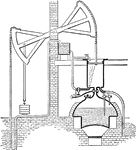
Newcomen Atmospheric Steam Engine
An illustration of Newcomen atmospheric steam engine. The boiler heats the water to build up steam in…
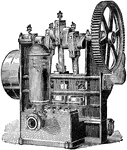
Power Pump Steam Engine
A power pump steam engine without shaft. The engine turns the wheel with the reciprocal motion of the…
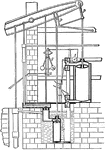
Watt's Final Steam Engine Design
The illustration showing Watt's final steam engine design. The engine is fitted with series of rods…
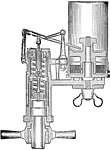
Thompson Indicator for Steam Engine
"The indicator consists of a cylinder in which a piston is fitted, a spring, multiplying lever, and…

De Laval Steam Turbine
A De Laval steam turbine. The turbine is operated by supplying steam into the four nozzles. The steam…
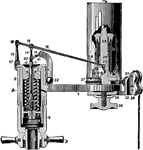
Three Way Pipe Valve for Attaching One Steam Engine Indicator
"If only one indicator is to be used for both ends of the cylinder, it may be connected by side pipes…